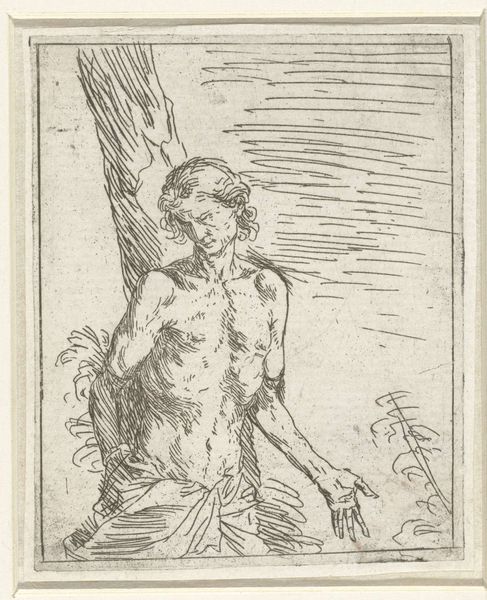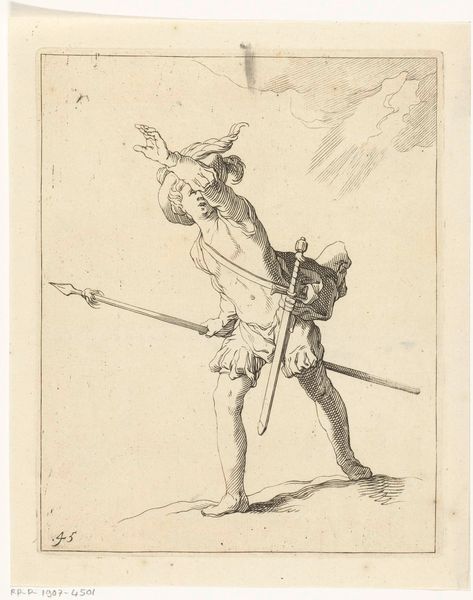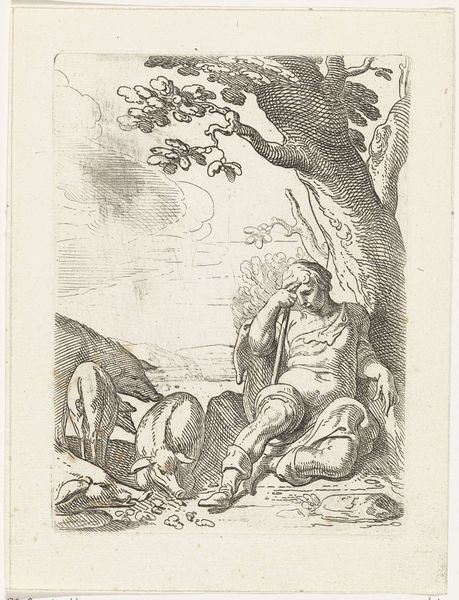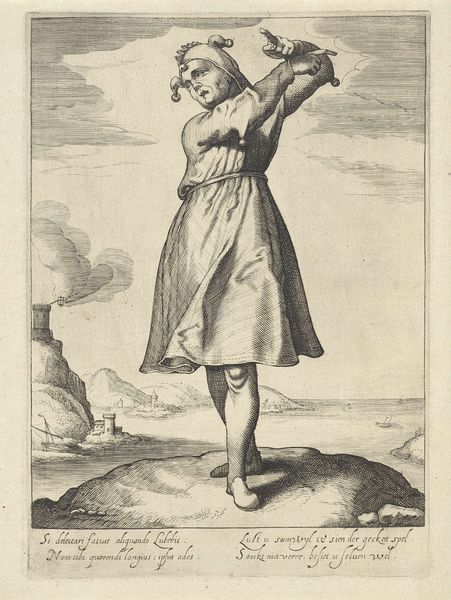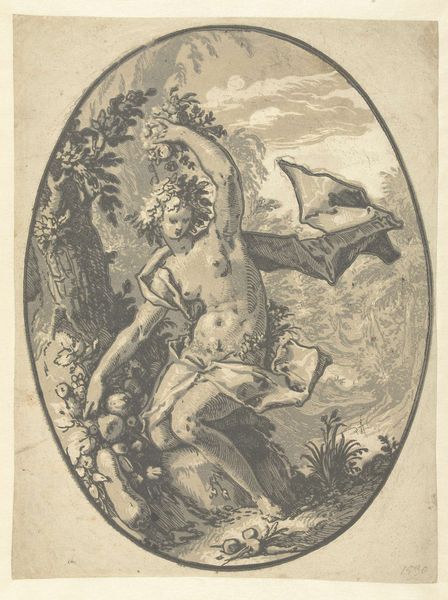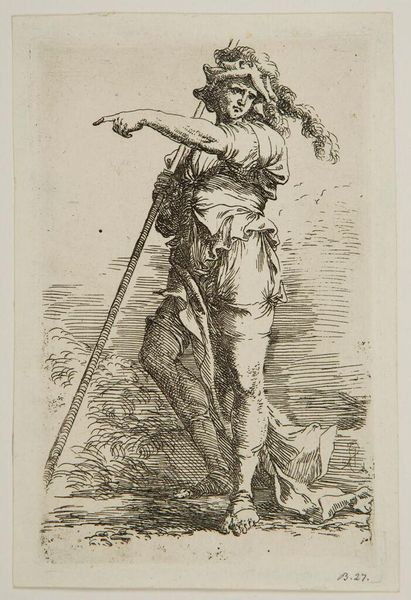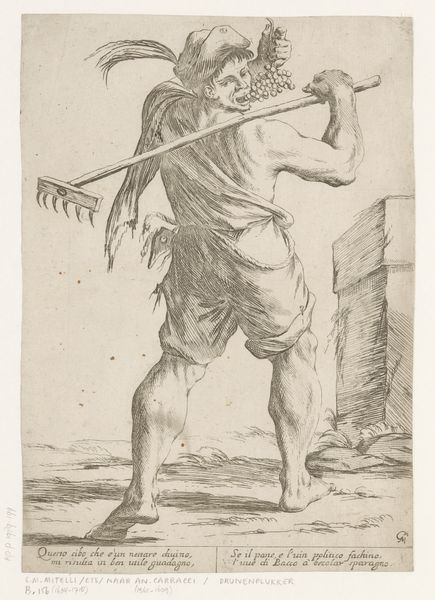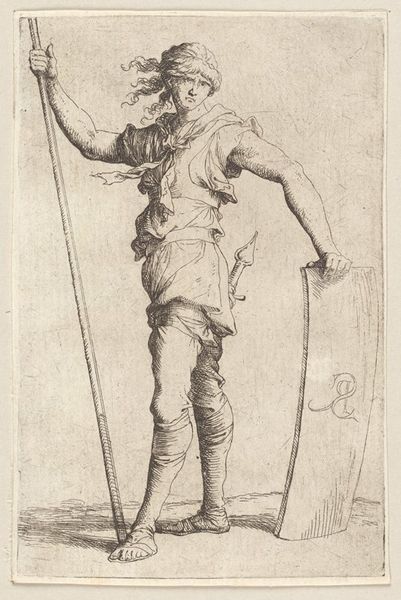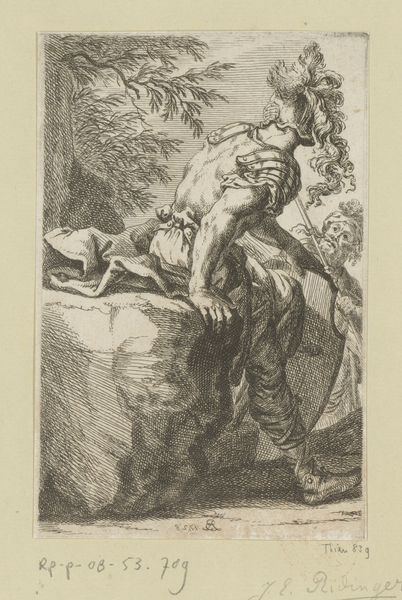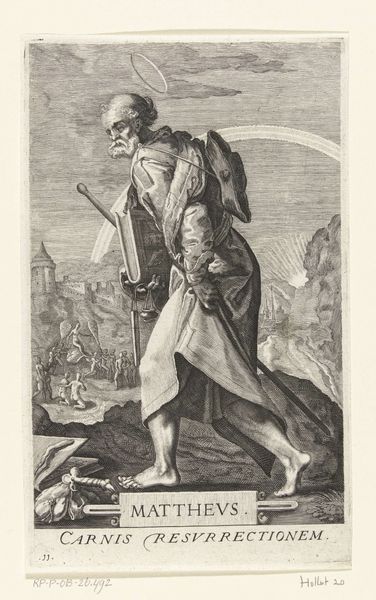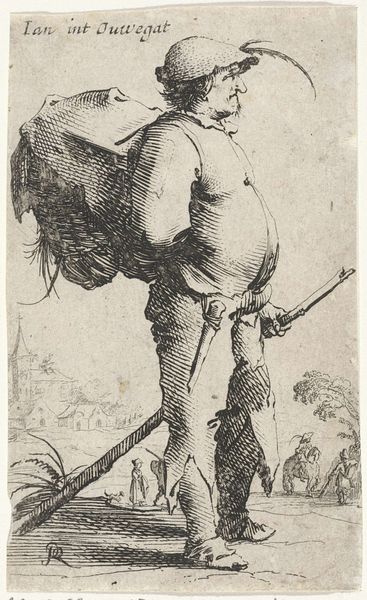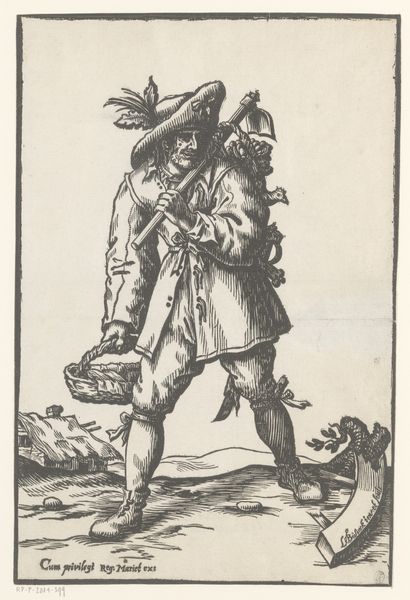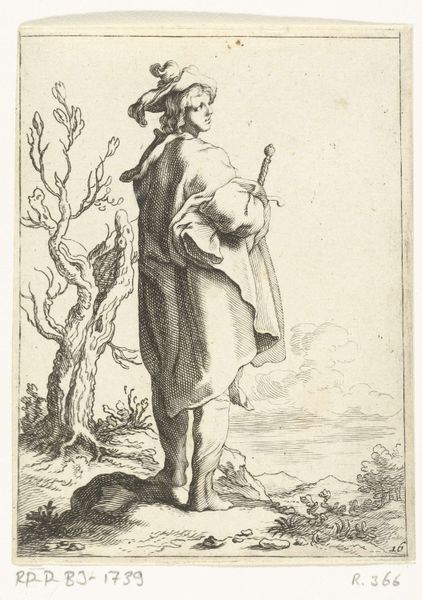
print, engraving
#
baroque
# print
#
pen illustration
#
landscape
#
figuration
#
line
#
genre-painting
#
engraving
Dimensions: height 133 mm, width 103 mm
Copyright: Rijks Museum: Open Domain
Curator: Welcome. Here we see "Water", an engraving by Frederick Bloemaert, dating from around 1632 to 1670. Editor: My first thought is one of texture. The variations achieved with simple lines is quite striking – look at the roughness of that fisherman's bare feet against the smoothness implied in the water surrounding the boat on the horizon. Curator: Indeed, Bloemaert’s skill in deploying line technique establishes depth, differentiating planes across the composition. The subject’s posture forms a subtle diagonal, moving the viewer’s eye from the oversized fish to the horizon. It evokes classical contrapposto despite the subject being a common fisherman. Editor: It speaks to how artistic practices were embedded within broader economies. The fisherman here represents not just a visual subject, but a worker extracting resources. The very act of printing multiple copies makes this art part of a system of commodification, doesn’t it? Curator: Precisely. Yet observe the symbolic language: the figure embodies the element of water, fulfilling the classical trope of elemental representation through figuration, aligning this print with the academic tradition of his time. Notice the inscription "Aqua." The lettering itself exhibits balanced harmony through shape and weight. Editor: But there's also an honesty in this depiction. The rough edges of his garments, the visible labor in his posture – it humanizes him. We cannot dismiss the materiality of ink meeting paper. Each impression unique, crafted by labor, distributed widely. Think of the workshops and skilled tradesmen involved in creating such art for both wealthy and middle-class consumption! Curator: I agree the process grants it significance. However, I also focus on the internal coherence, the elegant formal solution achieved through restrained means. Its balance and nuanced contrast transcend mere documentation. Editor: Perhaps, and that transcendence comes, in part, through the work embedded in creating that symbolic order. Understanding where these images were made, distributed and who they served remains important. Curator: A fitting perspective from which to see how structure and symbolism intersect. Editor: A beautiful dialogue to have, even with such contrasting views.
Comments
No comments
Be the first to comment and join the conversation on the ultimate creative platform.

